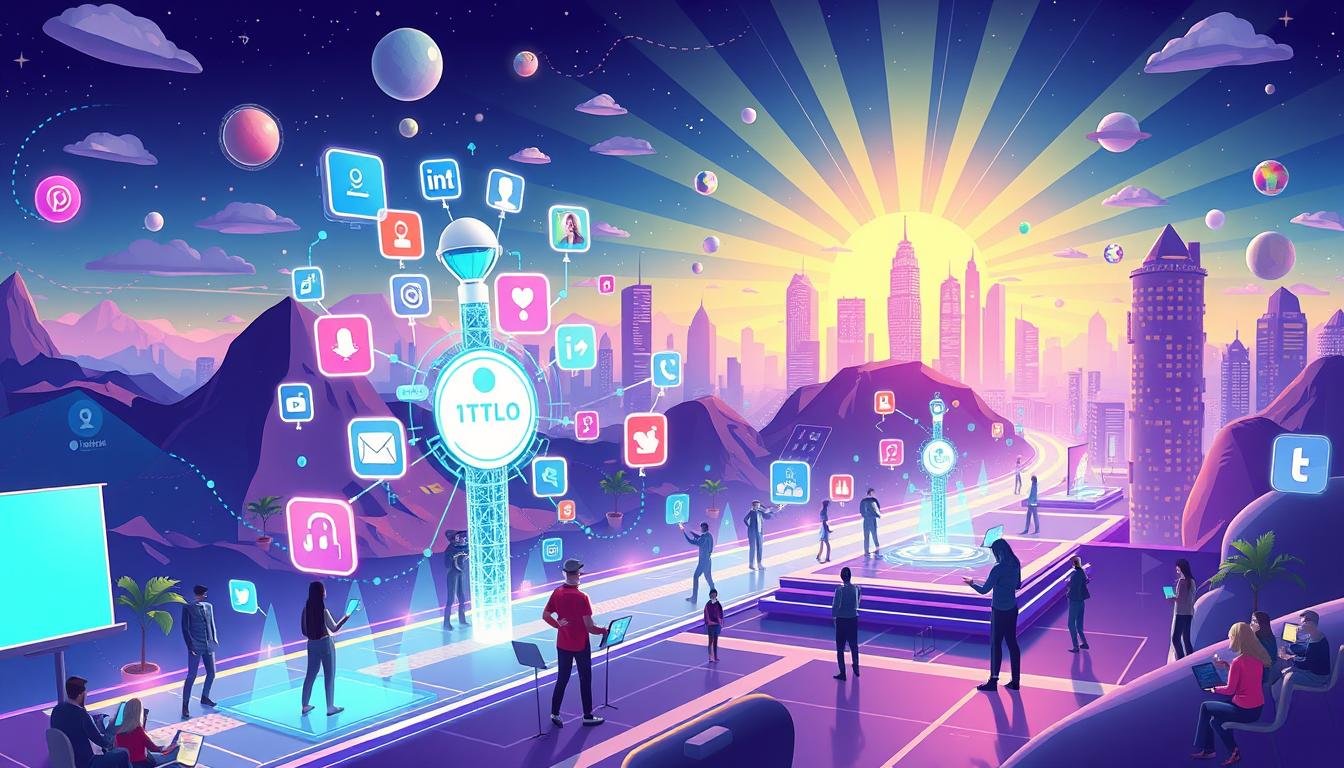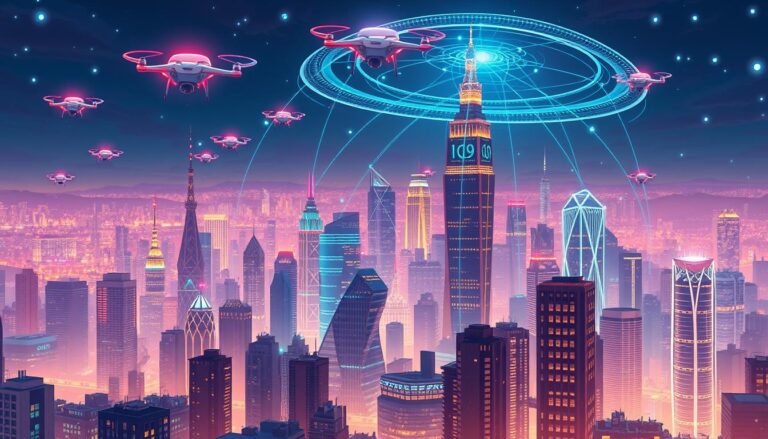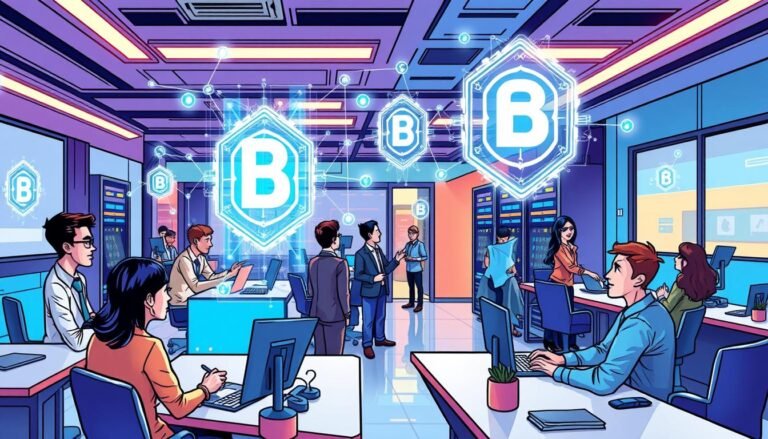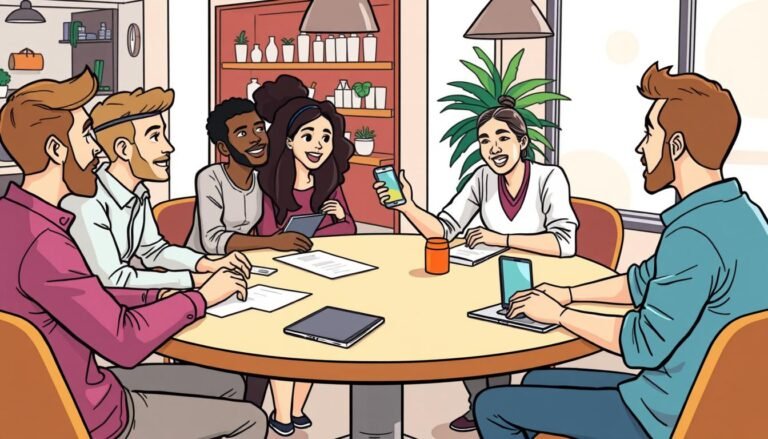The Growth of AI-Driven Influencer Marketing in 2025
Imagine a world where AI picks the perfect influencer for your brand. It also predicts how well your campaigns will do with amazing accuracy. As we move into 2025, influencer marketing is about to change a lot thanks to new AI tech.
Influencer marketing is growing fast, expected to hit $24 billion by 2025. It’s up from $16.4 billion in 2022. This shows AI is making this field even more powerful. About 90% of marketers say influencer partnerships work well, and they’re spending a lot on them.
AI helps brands make unique content that really speaks to people. It’s all about making your brand stand out in a crowded market. AI can help with everything from planning to creating content.
Places like TikTok and Instagram are changing how we see brand partnerships. They make it easy to shop right from the app. Also, people want brands to care about things like the environment and fairness. AI helps find influencers who share these values.
Key Takeaways
- The growth of AI-driven influencer marketing is projected to reach $24 billion by 2025.
- 90% of marketers recognize the effectiveness of influencer partnerships.
- AI tools are pivotal in identifying the best influencers and personalizing campaigns.
- Predictive analytics enhances the accuracy of forecasting campaign outcomes.
- Live-streamed shopping events are expected to account for 20% of global e-commerce sales by 2025.
- Micro and nano influencers are gaining traction, with 67% of marketers increasing investments in them.
- Consumers are demanding brands to stand for sustainability and social justice.
The Evolution of Influencer Marketing
Influencer marketing has changed a lot since it started. It now uses AI to connect better with people and target them more accurately. This change has brought new trends and improvements, like the rise of social media in the mid-2000s.
Platforms like Facebook, YouTube, and Twitter let people become famous online. Bloggers were among the first to use these platforms to share their stories and connect with others worldwide.
As Instagram and YouTube became popular, influencers started sharing more visual content. This led to the growth of micro-influencers and niche influencers. Brands now work with influencers for sponsored posts and other marketing efforts. For example, TheRight.Fit helps brands find influencers and offers insurance for talent booking in Australia.
Nano and micro-influencers are now favored for their genuine connections with their followers. But B2B influencer marketing on LinkedIn is also getting more complex. Finding the right influencers and measuring campaign success are big challenges. AI helps by analyzing data and using algorithms to find influencers.
AI is now key in influencer marketing. It helps create personalized campaigns that work better. Brands like GiffGaff use AI to make their campaigns more diverse and engaging. This is changing how marketing is done.
But there are still hurdles. Creating AI influencers can be expensive. They also might not connect with people as deeply as human influencers. Yet, the trend towards AI in influencer marketing is clear.
| Aspect | Pros | Cons |
|---|---|---|
| AI Influencers |
|
|
| Traditional Influencers |
|
|
AI-Driven Personalization and Predictive Analytics
Artificial Intelligence is changing influencer marketing in big ways. It helps create personalized campaigns and predict how well they’ll do. Now, nearly 49% of influencer marketing uses AI to improve results. About 63% of marketers plan to use AI to find the best influencers, showing its growing importance.
AI helps pick the right influencers and predict trends. It also checks how well audiences engage with campaigns. AI-driven strategies include analyzing influencer profiles and adjusting campaigns in real-time. For example, AI can track how influencers indirectly help sell products.
Brands like Burger King have seen success with AI. Their “Million Dollar Whopper” campaign is a great example. AI makes content more engaging by adapting to what people are doing in real-time. It also helps spot fake followers, keeping audiences real.
AI tools focus on real engagement, often choosing micro-influencers. This approach boosts campaign success. A Nielsen report found businesses using AI in influencer marketing saw a 30% boost in ROI.
Platforms like AspireIQ use AI to predict influencer success. They analyze data on past campaigns and audience behavior. This helps brands pick the best influencers and adjust strategies based on data.
A study showed a 45% boost in performance for a consumer electronics brand. They focused on eco-friendly features, leading to a 20% increase in conversions. This shows AI’s power in making campaigns better.
| AI-Driven Strategies | Benefits |
|---|---|
| Influencer Profile Analysis | Accurate Matching with Brand Goals |
| Sentiment Evaluation | Understanding Audience Reactions |
| Content Optimization | Enhanced Engagement Rates |
| Audience Segmentation | Targeted Campaigns |
| Real-Time Campaign Adjustments | Maximized Campaign Efficiency |
Artificial Intelligence Marketing Technologies
Artificial Intelligence (AI) is changing influencer marketing. It makes interactions better and campaigns more efficient. AI tools help with finding influencers, sharing content, and tracking results.
Brands like Burger King and Heinz have used AI well. Burger King’s Million Dollar Whopper campaign used a website to create burgers. This increased its reach a lot. Heinz also used AI to reward users and influencers, showing AI’s power in marketing.
AI also helps find the right influencers for brands. Tools like Sprout Social Influencer Marketing have over 10 million influencers in their database. AI helps find the best ones. Pitchbox and Brandwatch make managing influencers easier with AI.
AI gives marketers AI-Driven Insights. This lets them predict and adjust campaign results in real-time. It helps set clear goals and make data-driven changes to improve campaigns.
AI also helps avoid bad partnerships. Tools like Sprout Influencer Marketing analyze data and trends. This helps create strong marketing plans.
Using AI in marketing helps marketers get ready for changes. 54% of marketers feel they’re not fully ready for digital advertising changes. AI helps them be more prepared, making content more personal and engaging.
The Growth of AI-Driven Influencer Marketing
AI-Driven Influencer Marketing has changed how brands talk to people. It uses AI to make campaigns more personal, which brings big value and better ROI. With AI, marketers can look at lots of data to make their influencer campaigns better.
Tools like NeoReach and Influencity help find fake influencers. This makes sure campaigns are real and work well.
AI influencers like Lil Miquela have 2.6 million Instagram followers. They are cheap and always ready to talk to people. They also help brands reach the right people at the right time.
AI is also great at making content and talking to people in real time. It helps brands keep up with social media trends fast. This means they can change their plans quickly to meet what people want.
Caryn Marjorie, a Snapchat influencer, shows how AI makes marketing personal. She has nearly 2 million followers.
More and more people are using virtual influencers and AI in their marketing. In 2023, 60.4% of people tried virtual influencers. Working with famous virtual influencers like Lu do Magalu shows how well this can work.
Here’s a table with important stats and trends in AI-Driven Influencer Marketing:
| Statistic | Value |
|---|---|
| Growth Prediction for Influencer Marketing in 2024 | 25% |
| Current Usage of AI in Marketing | 75% of marketers |
| Businesses Interested in AI for Influencer Campaigns | 63% |
| Engagement with Virtual Influencers in 2023 | 60.4% |
| Influencer Fraud Detection Reduction (2022) | 36.68% |
Conclusion
As we look towards 2025, AI in influencer marketing is changing the game. Brands can now use AI for smarter, more personalized strategies. The AI market is expected to hit $407 billion by 2027, showing huge growth potential.
AI’s impact on marketing is huge. With 78% of marketers seeing influencer marketing as effective, AI tools are key. AI helps in making campaigns more targeted, setting new standards in digital marketing.
Virtual influencers are also gaining ground. In 2021, over 69.2 million people followed digital avatars on social media. The virtual assistant market is expected to grow to $178.80 billion by 2034. This shows a big shift towards digital influencers.
Brands that use these new technologies will likely see better engagement. The secret to success is using AI to boost creativity and strategy. This way, businesses can lead in AI marketing, making a big impact on their audience.
Source Links
- Top Influencer Marketing Trends You Can’t Afford to Miss in 2025
- Pixly Predictions for 2025: The Future of Influencer Marketing
- Marketing Trends 2025: Actionable Insights for Agencies & fCMOs
- AI Influencer: How Virtual Personalities are Shaping the Future of Marketing
- The Evolution of Influencer Marketing: From Royals to AI
- AI and Influencer Marketing: Revolutionizing the Future of Brand Engagement
- The Use of AI in Influencer Marketing – Key Trends, Tools, and Strategies to Succeed – inBeat Agency
- AI in Influencer Marketing: Data-Driven Insights for Smarter Collaborations
- AI in Influencer Marketing: How Artificial Intelligence is Transforming Campaigns
- AI influencer marketing: Enhancing your campaigns with AI tools
- AI-Driven Marketing Strategy: Leveraging New Technologies to Cultivate Enduring Customer Relationships
- The Rise of AI-Generated Influencers
- AI Tools for Influencer Success
- The State of AI in Influencer Marketing in 2024 | Sprinklr
- The Emergence of AI Influencers
- The Impact of AI on Influencer Marketing








